Skype is a popular software application currently developed by Microsoft that is mainly used for Instant Messaging and for Audio and Video conferencing calls. Among these functions, Skype can also be used for file sharing, desktop screen sharing, and text & voice messaging.
Thanks to its great set of features, that comes very much in use in holding online meetings and attending job interviews where geographical location is a barrier.
In this guide, we’ll cover the process of installing the latest version of Skype in CentOS, RHEL (Red Hat Enterprise Linux), and Fedora distributions.
[ You might also like: How to Install Skype on Debian, Ubuntu and Linux Mint ]
In order to install Skype in your Linux distribution, first, visit Skype official download page and download the latest available version of the software for Linux in your system by following the download link from the browser or use open a Terminal window and grab the package via wget command-line utility.
# wget https://go.skype.com/skypeforlinux-64.rpm
After the download completes, proceed with the Skype installation process, by opening a console and issuing the following command with root privileges, specific for the installed Linux distribution in your machine.
# yum localinstall skypeforlinux-64.rpm OR # dnf install skypeforlinux-64.rpm
Update: On Fedora, you can install Skype from the snap tool as shown.
$ sudo dnf install snapd $ sudo ln -s /var/lib/snapd/snap /snap $ sudo snap install skype --classic
After the installation process completes, start the Skype application by navigating to Application Menu -> Internet -> Skype.
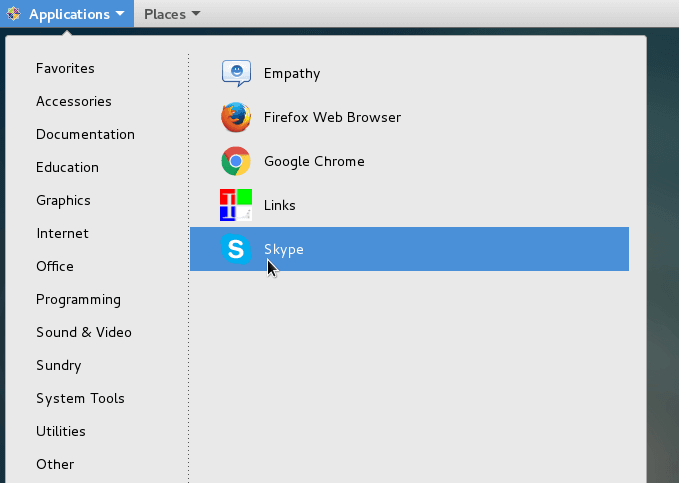
To start Skype from the command line, open a console and type skypeforlinux in Terminal.
# skypeforlinux
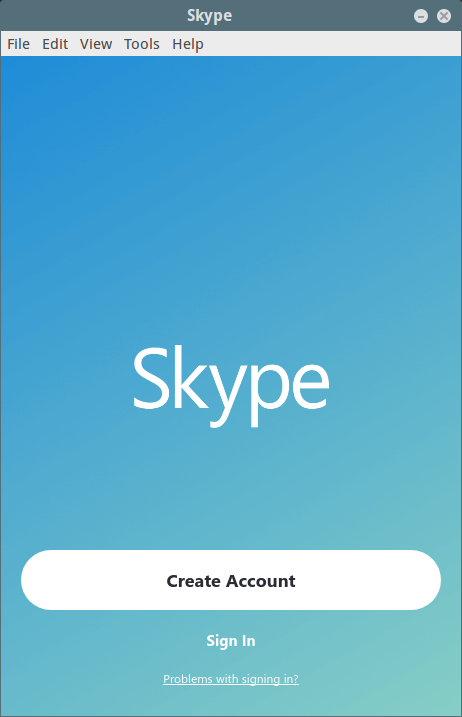
Sign In to Skype with the Microsoft account or hit on Create Account button and follow the steps in order to create a Skype account and freely communicate with your friends, family, or co-workers.



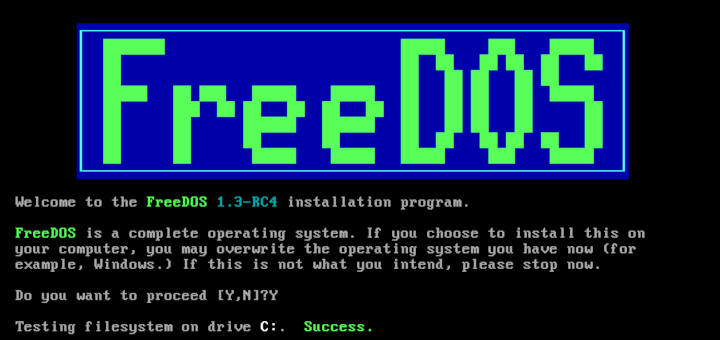
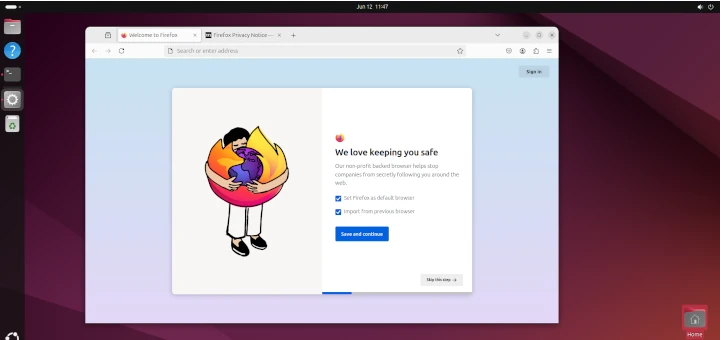
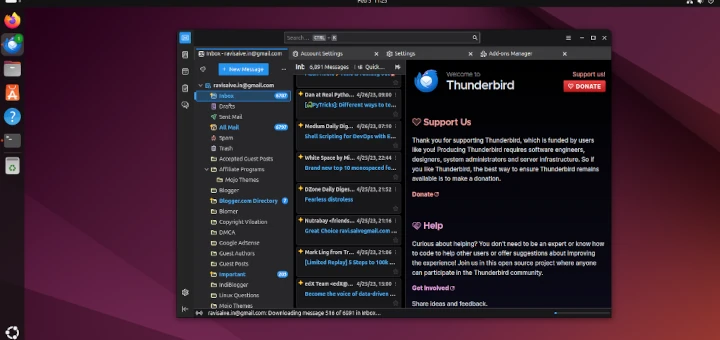


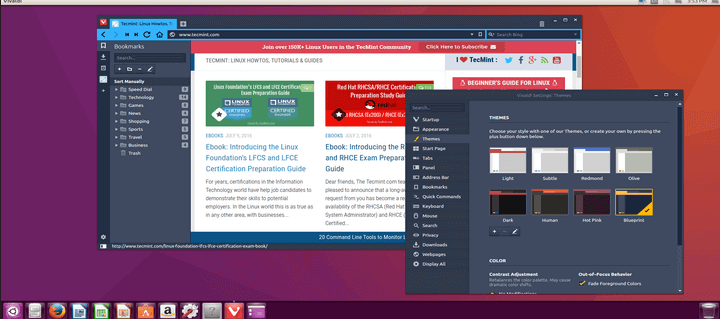
I have a physical host, with wired GigE internet, 16GB RAM, and a 4T HD with Centos 7.8 KDE Plasma desktop installed, fully yum updated, and recently rebooted.
Based on this article – I did the following, attempting to get skype for linux to work:
Selecting “Skype” from the Applications –> Internet menu does not work, nothing appears on the screen.
Executing “skypeforlinux” at the command line immediately returns to the command prompt without any message, nor error.
I’ve checked /var/log and the only log file written to during this time is ‘messages‘.
The relevant output is as follows:
May 7 14:06:22 T550072G yum[32269]: Installed: skypeforlinux-8.59.0.77-1.x86_64May 7 14:06:33 T550072G kernel: traps: skypeforlinux[32302] trap int3 ip:55978979615f sp:7ffe26ae1ac0 error:0 in skypeforlinux[55978787d000+5425000]
May 7 14:06:33 T550072G abrt-hook-ccpp: Process 32302 (skypeforlinux) of user 0 killed by SIGTRAP - dumping core
May 7 14:06:33 T550072G abrt-server: Package 'skypeforlinux' isn't signed with proper key
May 7 14:06:33 T550072G abrt-server: 'post-create' on '/var/spool/abrt/ccpp-2020-05-07-14:06:33-32302' exited with 1
May 7 14:06:33 T550072G abrt-server: Deleting problem directory '/var/spool/abrt/ccpp-2020-05-07-14:06:33-32302'
May 7 14:07:19 T550072G kernel: traps: skypeforlinux[32333] trap int3 ip:563be857f15f sp:7ffca67afb90 error:0 in skypeforlinux[563be6666000+5425000]
May 7 14:07:20 T550072G abrt-hook-ccpp: Process 32333 (skypeforlinux) of user 0 killed by SIGTRAP - dumping core
May 7 14:07:20 T550072G abrt-server: Package 'skypeforlinux' isn't signed with proper key
May 7 14:07:20 T550072G abrt-server: 'post-create' on '/var/spool/abrt/ccpp-2020-05-07-14:07:20-32333' exited with 1
May 7 14:07:20 T550072G abrt-server: Deleting problem directory '/var/spool/abrt/ccpp-2020-05-07-14:07:20-32333'
A google search on the relevant error message, “Package ‘skypeforlinux‘ isn’t signed with proper key” finds an old 2019 page in a foreign language (russian
https://www.linux.org.ru/forum/general/15233544) but even when translated, doesn’t seem to be of much help.Secondary searches of Microsoft’s site for this error does not return any results.
I’ve reviewed other links/URLs for ‘installing skype for linux‘, all of them show essentially the same commands/steps, and success you do here on tecmint.com.
Finally, there seems to be no way to inform Microsoft of this issue, unless one signs up for a Microsoft account—which I have no need of. Sigh.
Any help in addressing this error is greatly appreciated.
Doesn’t work on Centos 7. No errors can be found. It launches and ps ax | grep skype shows it running. I guess it just doesn’t work…
@William,
Try to start the Skype from commandline, and see for any errors on the terminal.
Hi,
I have completed above all steps but after installation successfully skype not opening on my centos 7.
Help me with this.
Thanks
@Swati,
May I know what’s error you getting while starting Skype?
I am also facing the same issue. It is just a flash skype window when opening in the Application -> internet -> skype. Does it require any package for centos 7. please suggest
Hi,
Thanks a lot
Worked like a charm. You rock. Thank you.
Works on RHEL 6.5. Thanks. Would like to have minimal cost-components presented when making any payments. E.g. would like to see which compoents would be needed to achieve in- and outgoing calls.
Great! Thank you. I am also running RHEL 6.2 32-bit.
Hi Ravi,
after install my computer with Fedora 20, I follow this steps that always work for my even with linux 64 bits, but fedora give me this error:
/usr/bin/skype: line 4: 3600 Illegal instruction (core dumped) $SKYPE_HOME/skype –resources=$SKYPE_HOME $*
can you help me, thanks
Add following lines to the file /usr/bin/skype.
Save file and run the skype command again.
thanks for the replay Ravi it didn’t work, look I did:
I didn’t Create symbolic link to libtiff.so.4 library, because I didn’t found the libtiff.so.3 file, but the libtiff.so.4 file exists, so I didn’t do this step
$ ls /usr/lib/libtiff.so.
libtiff.so.4 libtiff.so.5 libtiff.so.5.2.0
and I did all the symbolic links
$ sudo ln -s /opt/skype/icons/SkypeBlue_48x48.png /usr/share/icons/skype.png
$ sudo ln -s /opt/skype/icons/SkypeBlue_48x48.png /usr/share/pixmaps/skype.png
$ sudo ln -s /opt/skype/sounds/ /usr/share/sounds/
$ sudo ln -s /opt/skype/lang/ /usr/share/lang/
$ sudo ln -s /opt/skype/skype.desktop /usr/share/applications/skype.desktop
created and modify the permisions for the file /usr/bin/skype
$ sudo ls -la /usr/bin/skype
-rwxr-xr-x. 1 root root 87 Dec 27 07:47 /usr/bin/skype
edited the /usr/bin/skype file and add the lines you ask me to
#!/bin/sh
export SKYPE_HOME=”/opt/skype”
$SKYPE_HOME/skype –resources=$SKYPE_HOME $*
Saved this file and run the skype command again
and this the new error
$ skype
/usr/bin/skype: line 3: 29127 Illegal instruction (core dumped) $SKYPE_HOME/skype –resources=$SKYPE_HOME $*
thanks for your help again!
Thanks a lot man!
Hi Ravi,
thanks for all the tips you share with us!
Edgar García Santoyo
Perfect .. thanks a lot
Worked great on centos 6.4
Worked great on Red Hat 6.4 Enterprise
Thanks – worked well :-)
Thanks !!!!
I am using centos 6
I have completed all the above step executed successfully but at-last when i execute skype command to run it.. i m getting error that is:-
/usr/bin/skype: line 4: 2265 Segmentation fault (core dumped) $SKYPE_HOME/skype –resources=$SKYPE_HOME $*
Thanks for sharing great tutorial. I was able to setup by following this tutorial on RHEL 6.3.
Thanks – this is exactly what i needed
Great simple steps. Got it working on my CentOS6.3 64 bit
Great! Thank you. I am also running CentOS 6.3 64-bit on another machine and I’d like to install Skype there too. Do you have instructions for 64-bit version of CentOS? Thanks again!
After my posting my question on this forum, I was able to get Skype to work on my CentOS 6.3 64-bit version using this link http://wiki.centos.org/HowTos/Skype
I had already done all the steps described on this post, but it looks like I had to also install the 32-bit libv4l package by running this command (as described on the link I posted above): [root@host]# yum install libv4l.i686
Even though I had already done all the steps on this forum, I also followed all the steps on the link I posted above. I don’t think that’s necessary but that’s just what I did (yes I’m a n00b). I think you can just get away with installing the libv4l.i686 package as described above.
Good luck!! :)
nice 1 g8!!
how to install utorrent on centos 6.3 64 bit?? plz help
@ramsur tarun
Yes! we will provide you a step-by-step guide on how to install utorrent on CentOS/RHEL versions in our upcoming article. stay tuned and don’t forget to subscribe to our updates via email.